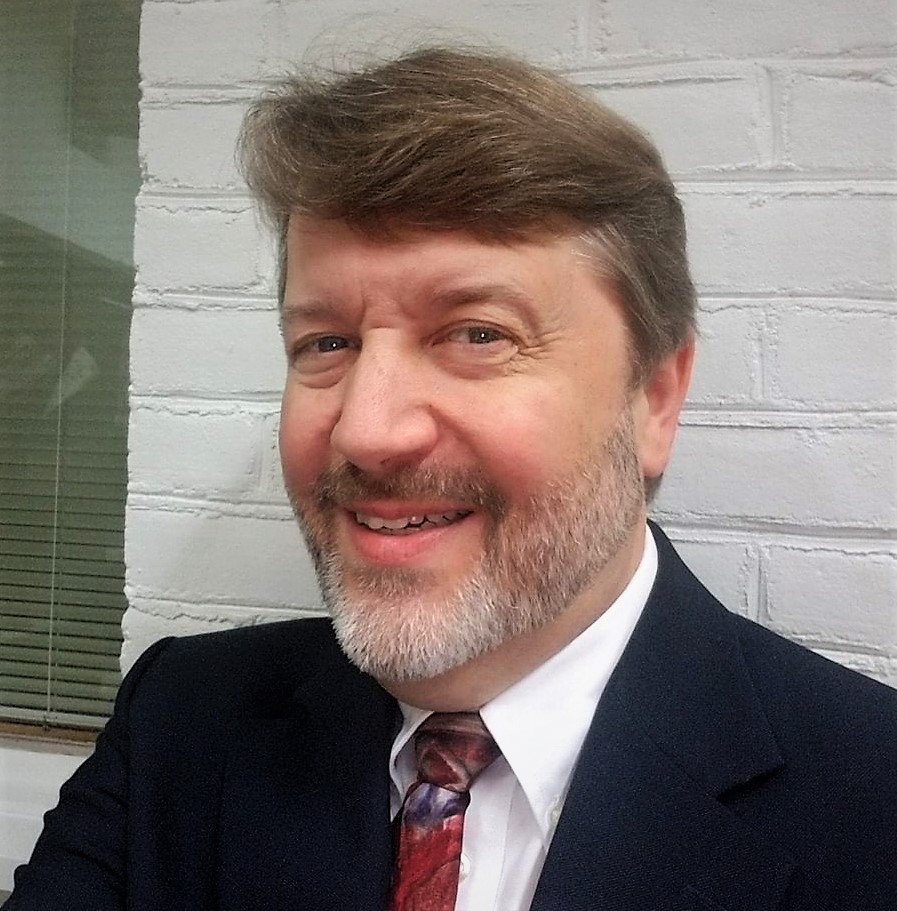Public Television Launches ‘Live at 9:30’ Series
WASHINGTON—Featuring a successful nightclub or particular site in a television series is nothing new, as fans of programs like “Live at the Apollo,” “Sessions at West 54th” and “Austin City Limits” well know.
On that note, Seth Hurwitz, co-owner of Washington’s D.C. renowned 9:30 Club, had been approached for years about producing a television program showcasing the venue’s diverse musical offerings. And he always said no—until the folks from The Content Farm, and Hurwitz’s publicist, Audrey Schaefer, came forward with a fresh idea more than two years ago, bringing in Chiet Productions to provide the production services.
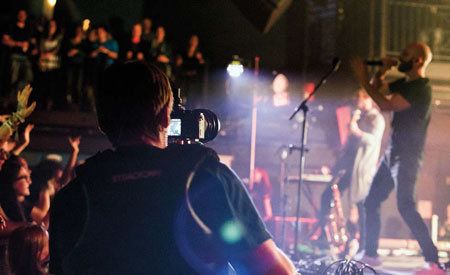
Camera Op Matt Sloan shoots on a Sony a7S II with a Canon 16-35mm lens flying on a Steadicam. “‘Live at 9:30’ is a great opportunity to work with people we trust to bring music variety to life in a way no one has even attempted,” Hurwitz said. “When I said we had no interest in just another concert program, they totally got it. They have come up with a truly entertaining bunch of new ideas on how to change the way people watch live concert shows.”
And now the 56-minute monthly offering of live music with interviews, short films, comedy and a surprise or two, is slated to debut on Public Television in May (check your local listings).
Most important to Hurwitz, a drummer who’s known to pop up on stage with acts at the club, is that the series is being created by music people; virtually all involved are passionate fans or musicians.
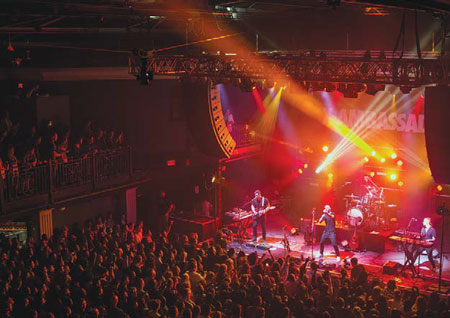
X Ambassadors and their fans rock out at the 9:30 Club while the “Live At 9:30” Production Crew discretely films their set.THE LINEUP
“Live at 9:30” Director of Photography Justin Chiet, a drummer and filmmaker specializing in music cinematography, switched from a Canon background to the Sony PXW-FS7, a7S and a7S II; and is using the GoPro HERO4 and Session to capture live performances at the club. All optics are still Canon, however, using L lenses like the 16-35mm II and 70-200mm for wide angle and telephoto shots.
“Our main goal is obtaining creative cinematography without hindering the audience’s concert experience in this intimate club environment,” said Chiet, of the 9:30, which holds 1,200 spectators. “They’re all relatively small, wireless and good in low light. We can shoot with the a7S, for instance, until the lights are out. The new version is capable of shooting internal 4K and even 120fps slow motion.”
Get the TV Tech Newsletter
The professional video industry's #1 source for news, trends and product and tech information. Sign up below.
Chiet Productions’ camera lineup for the concerts includes Steadicam operator Matt Sloan, on the Sony a7S II. “He shoots extreme sports, so maintaining a good shot of the artist while following them backwards down the stairs comes easily to him,” Chiet said. “The camera’s internal 5-axis stabilized sensor doesn’t hurt, either.” Nick Hughes covers the telephoto close-ups on a shoulder rig, along with sports camera ops Chris Ponder and Daniel Agre, who are the rovers around the club.
Their efforts are supported by Darius Lyles or Andrew Labens, who man the 4K safety shot from a tripod in the back of the venue; and Jeremy Jacoby, who operates the cable cam, from the crow’s nest atop the upper deck. Both use the a7S; Technical Coordinator Joshua Cheatum, utilizes Teradek’s Cube and Clip to wirelessly transmit all the video signals to Chiet and Production Manager Brittany Warrington’s iPads, stage right at the Video Village, so they can direct the crew.
When Chiet started planning production, such cameras needed to be customized; today, DEFY manufactures and markets the Dactylcam, which is a cable cam rig that flies the G2X, a small motorized brushless 3-axis gimbal. “We wanted to obtain some epic establishing shots of the shows without blocking anyone’s view, so we took to the ceiling,” said Chiet, as Jacoby flies the camera over the crowd and stage, obtaining shots that “surprise me every time.”
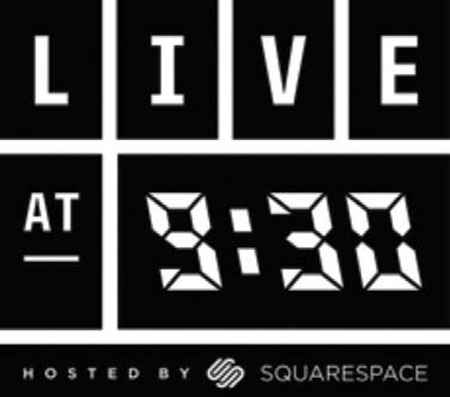
SMALLER, MORE POWER
That roster of Sony cameras is only the start of the video merriment. Chiet’s team also employs up to seven GoPro’s “hidden amongst the stage, which capture shots that an actual camera operator would never be able to get—especially those mounted on instruments, such as the neck of a standup bass or the side of a saxophone,” said Warrington. “We want to give the viewers at home the feeling of not only attending the concert, but being part of it on stage. These action shots in the edit are like sprinkles on the top of the [9:30 Club’s famous] cupcakes. Small cameras are needed, like the new GoPro Session, which can fit in the palm of your hand.”
All the cameras perform well in low light and the production does not change the normal routine for the band and lighting director. “Since we take more of a documentary approach, we want to shoot the subject in its natural state,” Chiet said. “If the content is great, the quality of the video doesn’t always have to come first.”
Just as crucial, of course, is the sound, which is also a trademark of the 9:30 Club and a factor in its success for 35 years. “I think what will enhance the show even more is that it’s coming from our well-treated room,” said Shawn “Gus” Vitale, production manager and sound engineer for the venue. “We have dozens of acoustic panels in our roof and have made every effort with the production crew to create the best performance atmosphere possible.”
To capture that vibe, Artem Bank, the show’s (multi-instrumentalist) sound engineer, uses a Zoom H6 to patch into the soundboard, getting a clean right and left feed, as well as ambient mics used to capture the audience and natural club sound. A Zoom R16 records an analog backup.
Warrington uses a MacBook Pro, G-Technology hard drives, and ShotPut Pro 5.0 to ingest about 20 cards full of media after each show, ranging from 700 GB to 1.2 TB per band. Cheatum preps all of the content for delivery to New York’s Broadway Video, while Chiet edits the music artist interviews with Producer Annika Young. Season one will end with more than 50 TB of media and more than 50 concerts filmed.
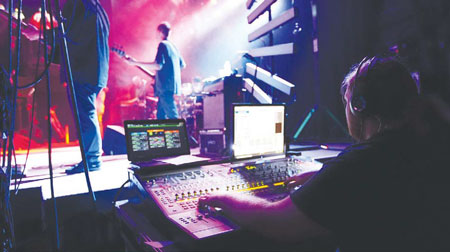
Sound Engineer Artem Bank records and mixes Galactic’s live performance side stage.WHAT TO CUT?
“Live at 9:30” is being cut at Broadway Video in Adobe Premiere Pro 2015. Editor Anthony Verderame called the software “awesome, in that you point at your media and it brings it into the edit”—which is doubly important when there are so many sources within a project. “When Chiet sends me another artist’s set or a segment, we connect them with previous projects via our small area network and start cutting away.”
Verderame, who is also a drummer, also syncs the soundboard copy and conducts color correction in Premiere, adding Red Giant and Sapphire effects that give every performance a unique look. “The main goal with this show is to find a balance between a live concert and a music video,” he said. But even with all of the relatively quick cuts, “The hardest part is figuring out what to cut, because we want to allow the performances to breathe.”
After he assembles all of the content, whether it’s the musical performances or interstitial content or even the B-roll of D.C. cityscapes and the club, the final product still has to clock in at 56:46.
Verderame receives two to four songs for each artist “and they are all in” the final cut, he said; while that means that “Live at 9:30” will contain some truncated sets, “some performances that I have to cut from the show for time will be featured on the web,” he said. “We’ve worked on numerous music projects over the years and creating web content often addresses that issue.”
Audio mixing and sweetening is done with ProTools 11 HD by Susan Pelino, also at Broadway, whose goal is to make sure the show sounds great, but still has a raw, live sound as if you’re experiencing it at the club. And, in the end, that’s the mission at hand.
By the end of the show, “The crew comes back to home base with big smiles on their faces, talking about amazing moments from that night,” Chiet said. “We never feel like we’ve been working. It’s more like a shared musical experience, and getting to capture that with some of today’s most innovative technology has been a great opportunity.”
Mark R. Smith has covered the media industry for a variety of industry publications, with his articles for TV Technology often focusing on sports. He’s written numerous stories about all of the major U.S. sports leagues.
Based in the Baltimore-Washington area, the byline of Smith, who has also served as the long-time editor-in-chief for The Business Monthly, Columbia, Md., initially appeared in TV Technology and in another Futurenet publication, Mix, in the late ’90s. His work has also appeared in numerous other publications.
